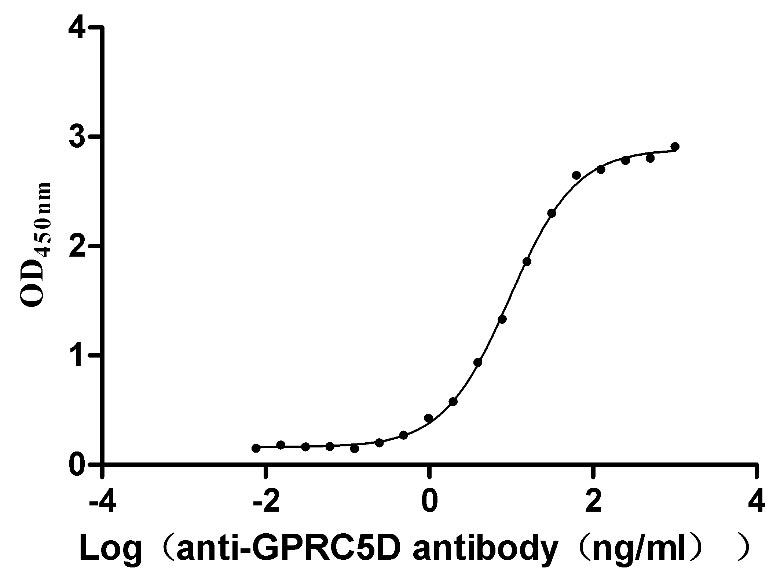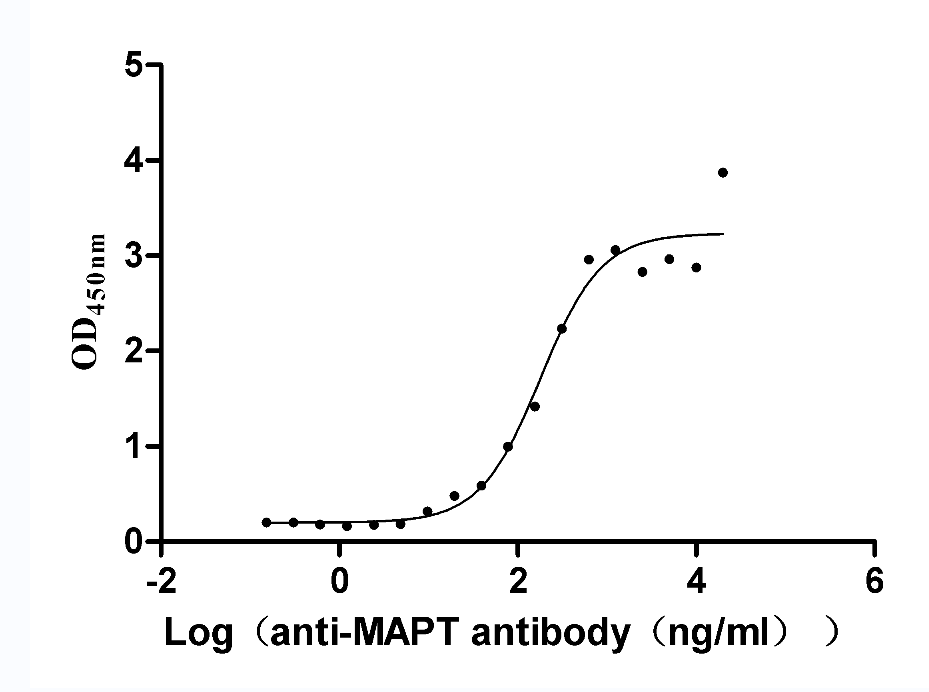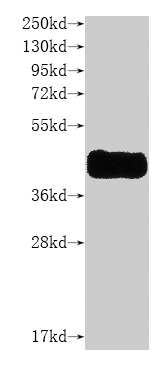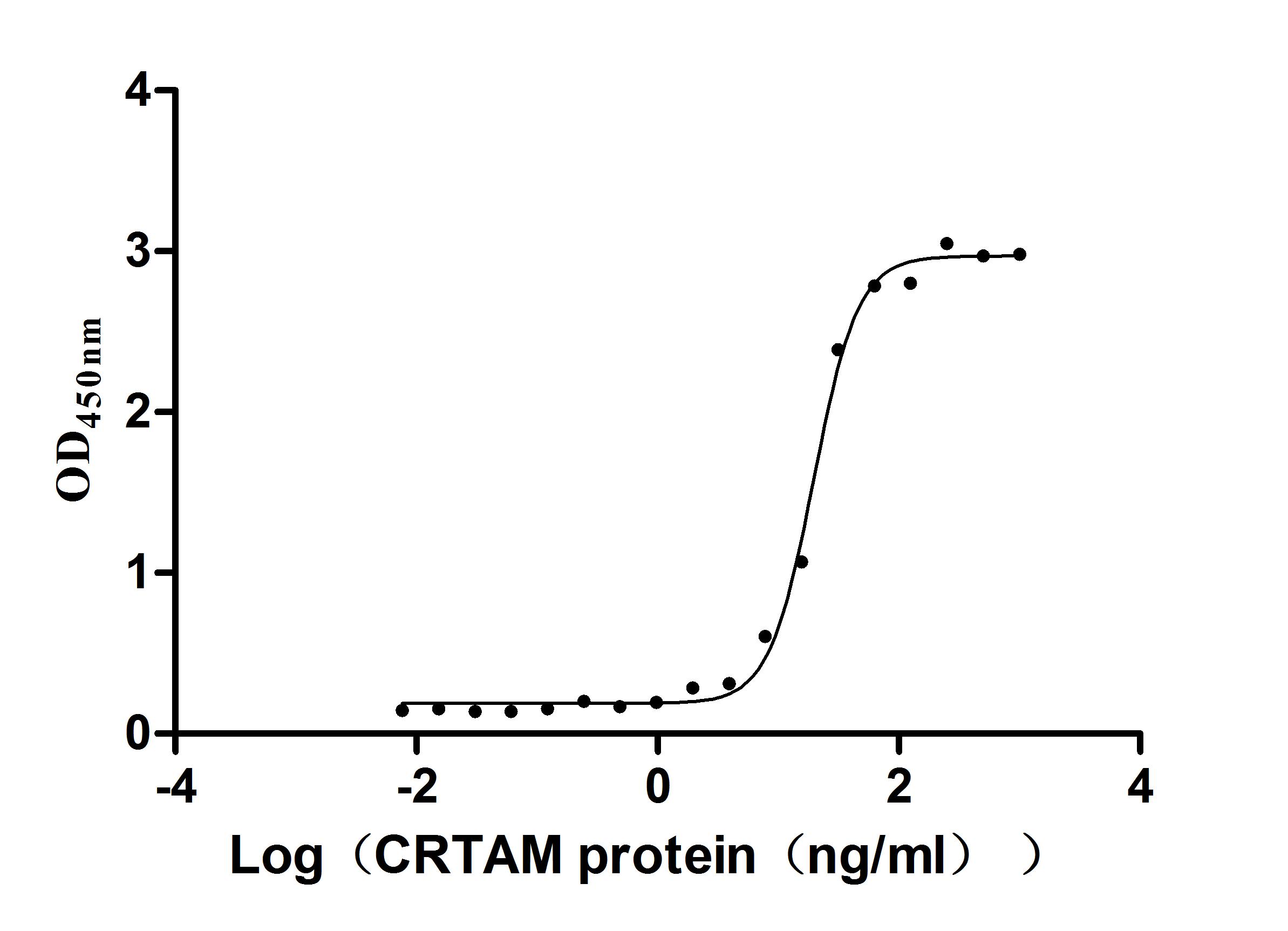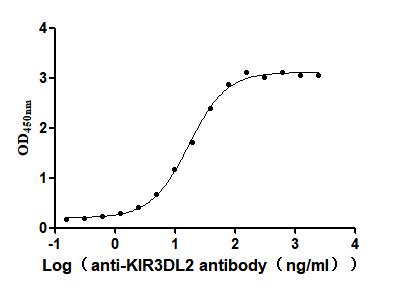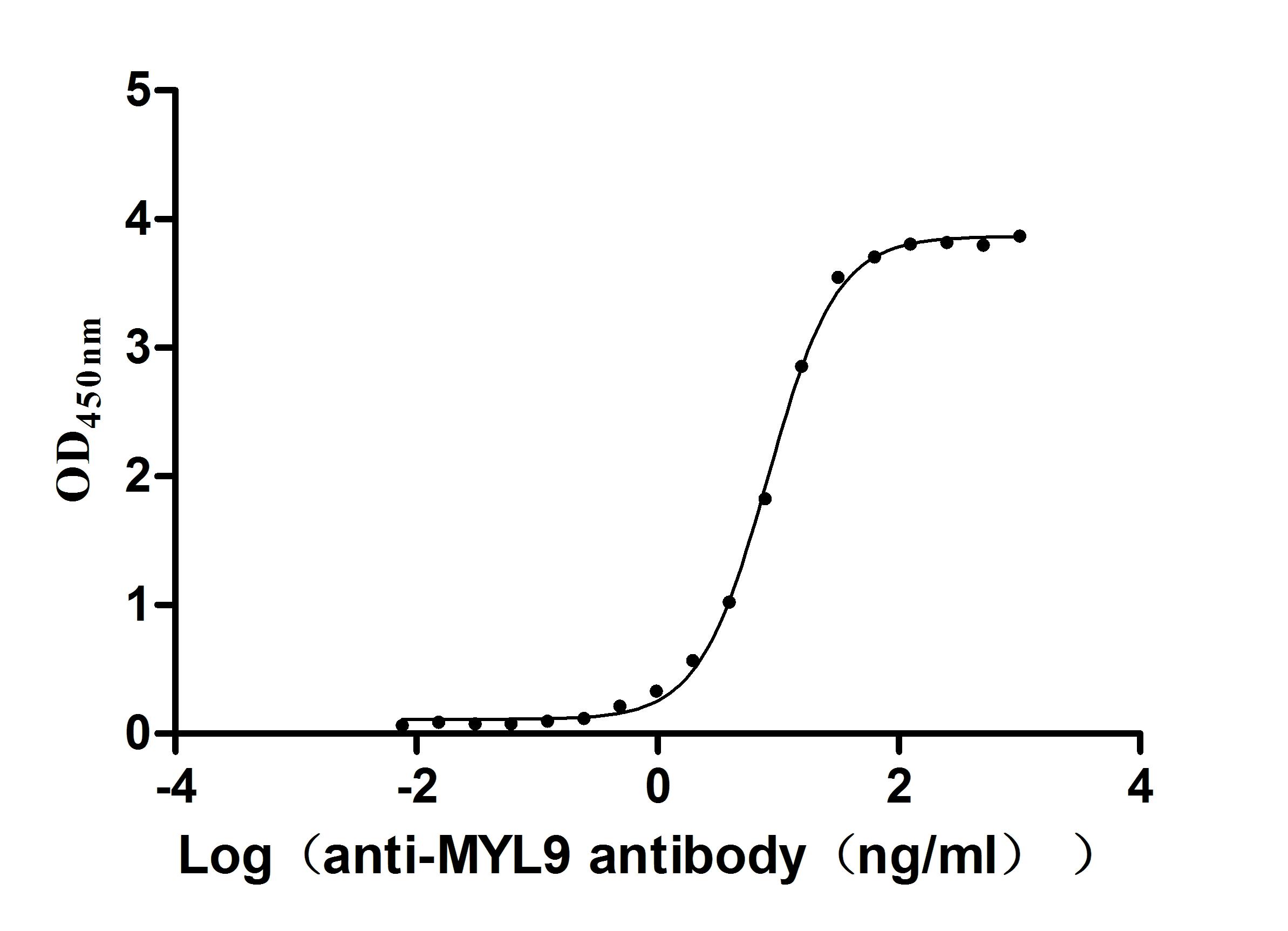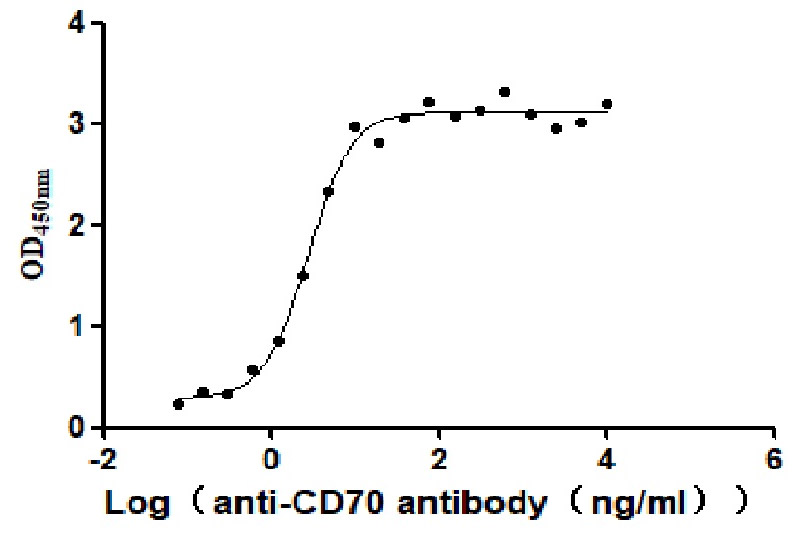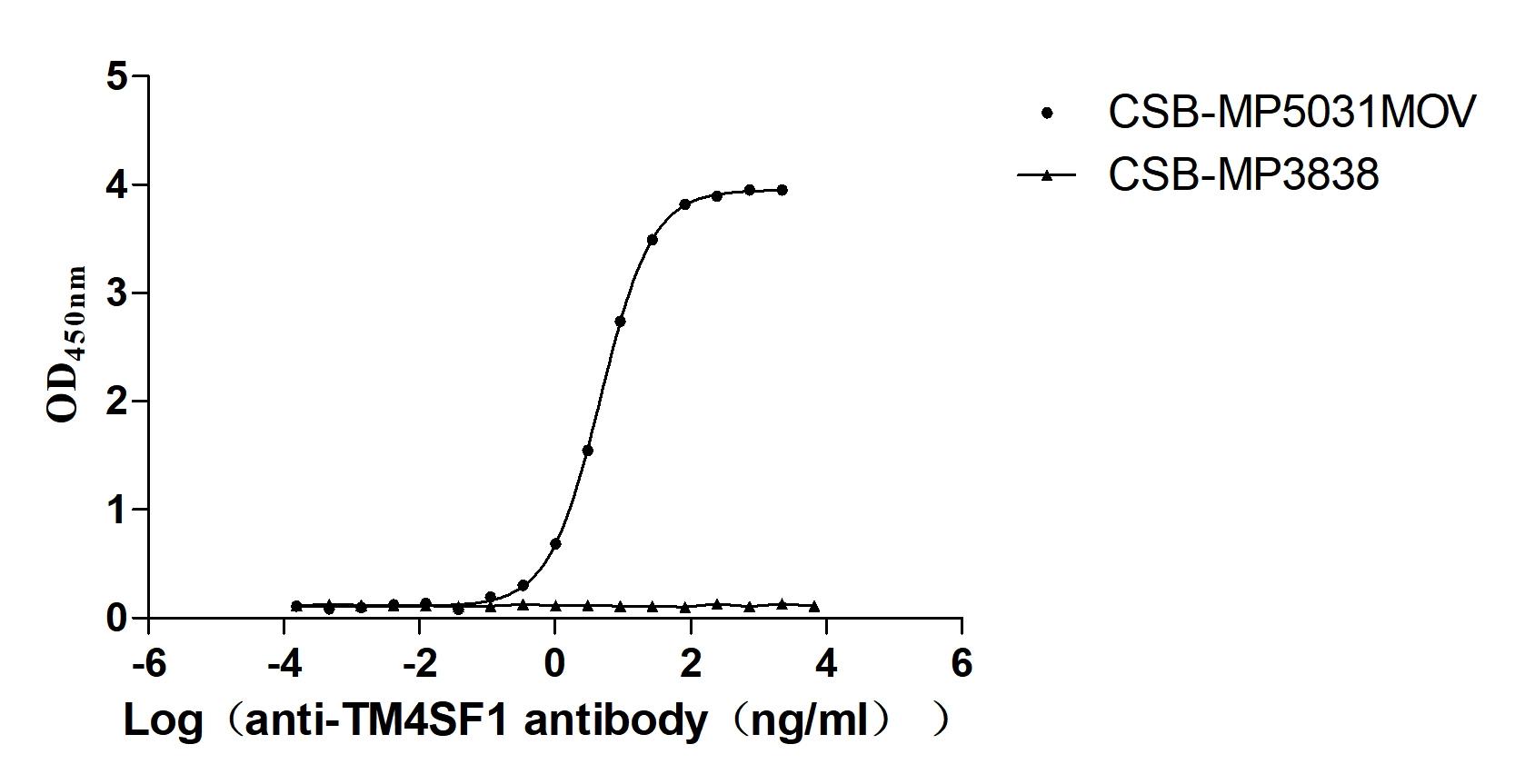Recombinant Drosophila melanogaster Transient receptor potential cation channel subfamily A member 1 (TrpA1), partial
-
中文名稱:黑腹果蠅TrpA1重組蛋白
-
貨號:CSB-EP770334DLU-B
-
說明書:
-
規(guī)格:
-
來源:E.coli
-
共軛:Avi-tag Biotinylated
E. coli biotin ligase (BirA) is highly specific in covalently attaching biotin to the 15 amino acid AviTag peptide. This recombinant protein was biotinylated in vivo by AviTag-BirA technology, which method is BriA catalyzes amide linkage between the biotin and the specific lysine of the AviTag.
-
其他:
產(chǎn)品詳情
-
純度:>85% (SDS-PAGE)
-
基因名:TrpA1
-
Uniprot No.:
-
別名:TrpA1; Anktm1; CG5751; Transient receptor potential cation channel subfamily A member 1; dTRPA1; Ankyrin-like with transmembrane domains protein 1; dANKTM1
-
種屬:Drosophila melanogaster (Fruit fly)
-
蛋白長度:Partial
-
蛋白標(biāo)簽:Tag?type?will?be?determined?during?the?manufacturing?process.
The tag type will be determined during production process. If you have specified tag type, please tell us and we will develop the specified tag preferentially. -
產(chǎn)品提供形式:Lyophilized powder Warning: in_array() expects parameter 2 to be array, null given in /www/web/cusabio_cn/public_html/caches/caches_template/default/content/show_product_protein.php on line 662
Note: We will preferentially ship the format that we have in stock, however, if you have any special requirement for the format, please remark your requirement when placing the order, we will prepare according to your demand. -
復(fù)溶:We recommend that this vial be briefly centrifuged prior to opening to bring the contents to the bottom. Please reconstitute protein in deionized sterile water to a concentration of 0.1-1.0 mg/mL.We recommend to add 5-50% of glycerol (final concentration) and aliquot for long-term storage at -20℃/-80℃. Our default final concentration of glycerol is 50%. Customers could use it as reference.
-
儲存條件:Store at -20°C/-80°C upon receipt, aliquoting is necessary for mutiple use. Avoid repeated freeze-thaw cycles.
-
保質(zhì)期:The shelf life is related to many factors, storage state, buffer ingredients, storage temperature and the stability of the protein itself.
Generally, the shelf life of liquid form is 6 months at -20°C/-80°C. The shelf life of lyophilized form is 12 months at -20°C/-80°C. -
貨期:Delivery time may differ from different purchasing way or location, please kindly consult your local distributors for specific delivery time.Note: All of our proteins are default shipped with normal blue ice packs, if you request to ship with dry ice, please communicate with us in advance and extra fees will be charged.
-
注意事項(xiàng):Repeated freezing and thawing is not recommended. Store working aliquots at 4°C for up to one week.
-
Datasheet :Please contact us to get it.
靶點(diǎn)詳情
-
功能:Essential for thermotaxis by sensing environmental temperature. Receptor-activated non-selective cation channel involved in detection of sensations such as temperature. Involved in heat nociception by being activated by warm temperature of about 24-29 degrees Celsius.
-
基因功能參考文獻(xiàn):
- We show that signalling through the TrpA1 thermo-sensor is required for PMW, and that TrpA1 specifically impacts siesta onset, but not night sleep onset, in response to elevated temperatures. We identify two critical TrpA1-expressing circuits and show that both contact DN1p clock neurons, the output of which is also required for PMW. PMID: 28084307
- This review discusses the various roles that TRPA1 plays in temperature related behaviors with a main focus on the underlying neuronal circuits. [review] PMID: 28972543
- Characterization of TRPA1 and RyR demonstrates that Ca(2+) signaling is required for oxidative stress-induced activation of the Ras/MAPK pathway, which in turns drives intestinal stem cell proliferation. PMID: 28561738
- study shows that activity/rest rhythms are modulated in a temperature-dependent manner via signals from dTRPA1(SH)-GAL4 driven neurons. Taken together, these results emphasize the differential influence of thermoreceptors on rhythmic behavior in fruit flies in coordination with light inputs. PMID: 26868037
- These findings demonstrate that Drosophila detects bacterial endotoxins via a gustatory pathway through TRPA1 activation as conserved molecular mechanism. PMID: 27296646
- Collectively, TRPA1 A isoform rapidly responds to natural sunlight intensities through its nucleophile sensitivity as a receptor of photochemically generated radicals, leading to an acute light-induced behavioral shift in Drosophila. PMID: 27656903
- H2O2-sensitive dTRPA1 isoforms promote avoidance of UV when adult Drosophila females are selecting sites for egg-laying. PMID: 27932542
- study concludes that the TRPA1 channel is not required for temperature synchronization but instead is required to repress activity during the warm part of the day PMID: 26459465
- Contribution of Drosophila TRPA1 to Metabolism. PMID: 27055172
- Citronellal can promote feeding deterrence of fruit flies through direct action on gustatory dTRPA1, revealing the first isoform-specific function for TRPA1(A). PMID: 26447139
- Recent work has uncovered the Transient Receptor Potential (TRP) channels TRPA1 mediating fly thermosensation. PMID: 25616212
- temperature sensitive regulation of afternoon peak activity under semi-natural conditions PMID: 26226013
- results suggest that specific isoforms of dTRPA1 can sense UV light via photochemical production of H2O2 PMID: 26443856
- reported expression of TrpA1 in clock neurons is unlikely to be involved in generating the summer locomotor profile, suggesting that other TrpA1 neurons are responsible for the A component PMID: 26124142
- The activation of TRPA1-expressing neurons may differentially coordinate light/dark circadian entrainment, depending on the temperature. PMID: 24367706
- A 37-amino-acid-long intracellular region (encoded by a single exon) that is critical for dTRPA1 temperature responses. PMID: 22347718
- This study showed that Drosophila TRPA1 (transient receptor potential cation channel A1) was necessary for normal activity patterns during temperature cycles. PMID: 23595730
- Residues in the pore region of Drosophila transient receptor potential A1 dictate sensitivity to thermal stimuli PMID: 23027824
- determination of how thermal vs chemical stimuli activating Drosophila TRPA1 are discriminated PMID: 22139422
- Cytoplasmic ankyrin repeats of transient receptor potential A1 (TRPA1) dictate sensitivity to thermal and chemical stimuli PMID: 21930928
- TRPA1 is identified as a conserved regulator of nociception. PMID: 21909389
- These results suggest that TRPA1 is required for activation of a BK channel to modulate citronellal-evoked action potentials and for aversion to citronellal. PMID: 20797863
- TRPA1 mediates the Slowly Adapting mechanically-activated currents in small-diameter IB4 negative neurons PMID: 20808441
- Honeybee TRPA and Drosophila TRPA1 are functionally comparable in Drosophila as a direct, but not indirect, chemical sensor for insect antifeedants. PMID: 20844118
- found that TRPA1 was expressed in gustatory receptor neurons that respond to aversive compounds. PMID: 20404155
- The pore of TRPA1 is dynamic and supports a surprisingly large Ca(2+) influx. PMID: 20197030
- functional comparison with mouse protein PMID: 12815418
- AC neuron activation occurs just above the fly's preferred temperature and depends on dTrpA1, an ion channel that functions as a molecular sensor of warmth PMID: 18548007
- We propose that activation of TRPA1 through a signaling cascade promotes amplification of small differences in temperature and facilitates adaptation to temperatures within the comfortable range. PMID: 18660806
- dTRPA1 is essential for warm avoidance, but not cool avoidance PMID: 18787131
- suggest that dTRPA1 may be particularly useful for researchers interested in activating fly neural circuits over long time scales. PMID: 19339465
顯示更多
收起更多
-
亞細(xì)胞定位:Cell membrane; Multi-pass membrane protein.
-
蛋白家族:Transient receptor (TC 1.A.4) family
-
數(shù)據(jù)庫鏈接:
Most popular with customers
-
Recombinant Human G-protein coupled receptor family C group 5 member D (GPRC5D)-VLPs (Active)
Express system: Mammalian cell
Species: Homo sapiens (Human)
-
Recombinant Rat Microtubule-associated protein tau (Mapt) (Active)
Express system: Mammalian cell
Species: Rattus norvegicus (Rat)
-
Recombinant Human C-C chemokine receptor type 8 (CCR8)-VLPs (Active)
Express system: Mammalian cell
Species: Homo sapiens (Human)
-
Recombinant Human Cell adhesion molecule 1 (CADM1), partial (Active)
Express system: Mammalian cell
Species: Homo sapiens (Human)
-
Recombinant Human Killer cell immunoglobulin-like receptor 3DL2 (KIR3DL2), partial (Active)
Express system: Mammalian cell
Species: Homo sapiens (Human)
-
Recombinant Human Myosin regulatory light chain 12B (MYL12B) (Active)
Express system: E.coli
Species: Homo sapiens (Human)
-
Recombinant Human CD70 antigen (CD70), partial (Active)
Express system: Mammalian cell
Species: Homo sapiens (Human)
-
Recombinant Macaca fascicularis Transmembrane 4 L6 family member 1 (TM4SF1)-VLPs (Active)
Express system: Mammalian cell
Species: Macaca fascicularis (Crab-eating macaque) (Cynomolgus monkey)


